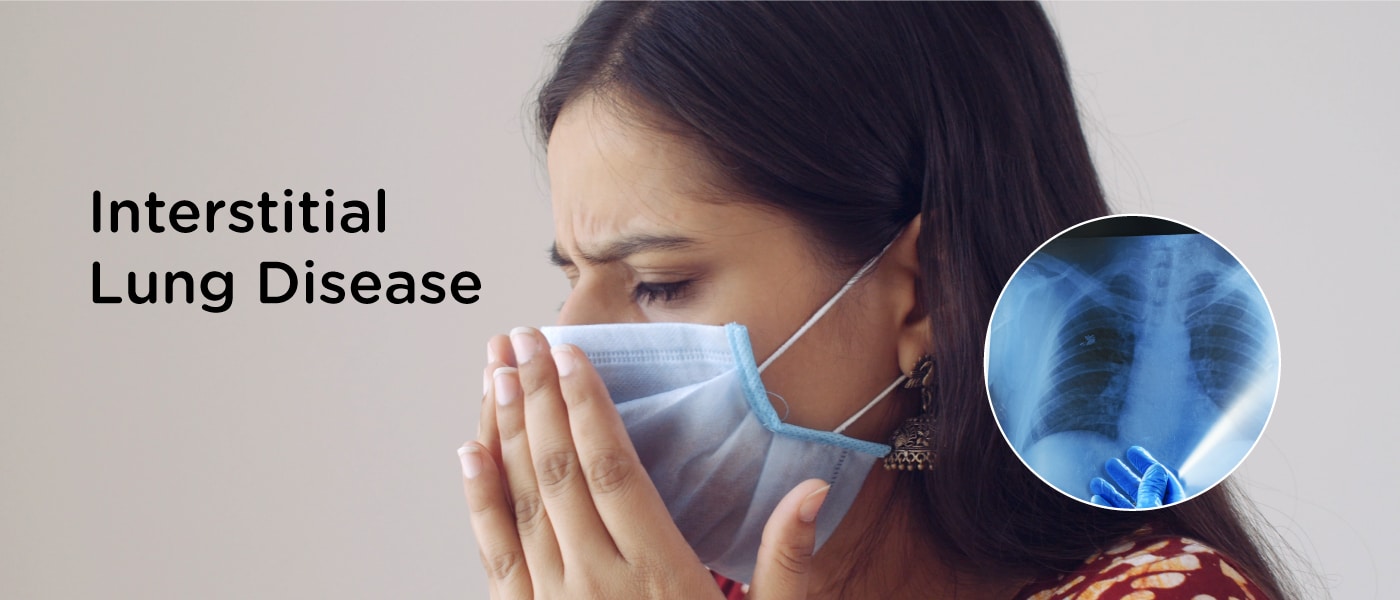
Shortness of breath may not feel urgent in the beginning. You might notice it only while walking uphill or climbing stairs. Later, it appears during daily tasks like dressing, cooking, or even speaking for long periods. At first, it feels like your body just needs rest or more exercise. But over time, the breathlessness doesn’t go away. It becomes more frequent, more intrusive, and harder to explain. You avoid physical activity without meaning to. That gradual reduction in daily effort is often one of the earliest signs of interstitial lung disease. Breathlessness often begins with simple activities, long before people recognize a pattern.
The lungs become stiff and lose their flexibility
In interstitial lung disease (ILD), the lungs begin to lose their ability to expand. This is not like an asthma attack or sudden blockage. The tissue inside the lungs becomes thick, hard, and scarred. That scarring—called fibrosis—limits the lungs’ flexibility. Over time, it reduces how much oxygen can enter the blood. This causes fatigue, dizziness, and a general sense of being unwell. Many patients notice that deep breaths don’t feel satisfying. They feel like the air isn’t reaching where it should. The lungs become stiff and lose their flexibility slowly, and the process can’t be reversed once the tissue is damaged.
Cough lingers even without infection
ILD often brings a persistent, dry cough that doesn’t respond to antibiotics. It isn’t caused by viruses, bacteria, or postnasal drip. The cough remains, sometimes for months, sometimes for years, and often worsens with activity or cold air. It’s frustrating because it doesn’t produce phlegm. It’s not contagious, but it draws attention in public. Some people cough more at night. Others have coughing fits after talking too much. Over-the-counter medications don’t help. Doctors might first suspect allergies or reflux. But in ILD, cough lingers even without infection, and it reflects irritation deep in the lung tissue itself.
Oxygen levels may drop without warning
One of the most alarming aspects of ILD is how suddenly oxygen levels can fall. Patients might feel fine while resting but become dizzy after standing up or walking a short distance. They may notice shortness of breath during conversations or feel exhausted after mild effort. These drops in oxygen aren’t always dramatic at first. But as the disease progresses, they happen more frequently. Even sitting can become difficult without support. Oxygen levels may drop without warning, especially in environments with poor air circulation or high altitudes. Monitoring saturation becomes critical to daily function.
Interstitial lung disease is not a single diagnosis
The term “interstitial lung disease” refers to a group of disorders, not one single condition. What they share is a common effect: inflammation or scarring of the lung interstitium, the tissue surrounding the air sacs. Some types are caused by autoimmune conditions like rheumatoid arthritis or scleroderma. Others are linked to exposure—dust, mold, or certain medications. In some cases, doctors never find a cause, and the disease is called idiopathic pulmonary fibrosis (IPF). The symptoms are similar, but treatment approaches vary. Interstitial lung disease is not a single diagnosis—it’s a category requiring detailed investigation.
Symptoms can remain stable for years or change quickly
Some people live with ILD for years without major changes. Their symptoms stay mild, their activity levels adjust slightly, and they manage without oxygen support. Others experience sudden declines in lung function. This variability makes ILD difficult to predict. A person who felt stable one month might need hospitalization the next. Infections, stress, or environmental triggers can accelerate progression. This unpredictability adds emotional strain to the physical burden. Symptoms can remain stable for years or change quickly, and regular follow-ups become essential even when patients feel “okay.”
Fatigue becomes a daily companion, not just a side effect
Tiredness is more than a symptom—it becomes a full part of life. People with ILD often say that no amount of rest makes them feel restored. This fatigue doesn’t come from sleep deprivation; it comes from low oxygen. The body works harder to perform basic tasks. Walking a short distance might feel like running a marathon. Concentration becomes difficult. Motivation dips. Even social interactions feel draining. Fatigue becomes a daily companion, shaping routines, relationships, and priorities. It’s not something others can see, but it shapes nearly every part of the patient’s day.
Imaging tests are often more revealing than basic checkups
A person might pass a standard physical exam but still struggle to breathe. Their chest X-ray may appear normal. Only when a high-resolution CT scan is done do the patterns of ILD become visible. Ground-glass opacities, honeycombing, and reticulation are terms used by radiologists to describe these subtle but serious changes. Doctors use these scans to confirm diagnoses, track disease progression, and evaluate treatment response. Imaging tests are often more revealing than basic checkups, especially in early or confusing cases. Without them, ILD can remain undiagnosed for years.
Lung biopsy is not always necessary but sometimes unavoidable
In some situations, doctors can diagnose ILD based on symptoms, imaging, and blood tests. But when the picture isn’t clear, they may suggest a lung biopsy. This involves removing a small piece of lung tissue for analysis. It sounds frightening, but it can provide valuable information. A biopsy can determine the type of ILD and guide treatment decisions. It also helps rule out infections or cancers. Lung biopsy is not always necessary but sometimes unavoidable—especially when treatment options carry serious risks.
Environmental and occupational exposures can play a silent role
Many people who develop ILD have no idea what caused it. But years of exposure to dust, smoke, chemicals, or mold may contribute silently. Farmers, construction workers, and textile workers are especially at risk. Even indoor mold or poorly ventilated spaces can increase susceptibility. Sometimes the damage appears decades after the exposure. Environmental and occupational exposures can play a silent role, even when daily life seems normal and safe. A detailed history can be crucial in identifying preventable triggers.
Autoimmune diseases are a common underlying cause
ILD is frequently associated with autoimmune conditions. The immune system, meant to protect the body, turns against lung tissue. This inflammation causes damage over time. Patients with lupus, rheumatoid arthritis, scleroderma, or Sjögren’s syndrome should be routinely monitored for lung changes. Sometimes, ILD appears before the autoimmune condition is diagnosed. Joint pain, skin changes, or dry eyes may accompany the lung symptoms. Autoimmune diseases are a common underlying cause, and treating the immune system directly can help slow lung damage.
Not all treatments work the same for every patient
There’s no single cure for ILD, but several therapies aim to slow progression. Corticosteroids, immunosuppressants, and antifibrotic medications are often used. For some, these work well. Others see little improvement. Side effects can also vary widely. One patient may tolerate a drug easily; another may develop complications. Oxygen therapy helps with symptoms but doesn’t stop the scarring. Not all treatments work the same for every patient, and adjustments often take time and careful monitoring by a lung specialist.
Emotional and psychological support becomes a lifeline
ILD doesn’t just affect the lungs. It reshapes mental health. Many patients feel isolated. They fear worsening symptoms. They grieve the activities they’ve lost. Depression and anxiety are common. Support groups—both online and in person—offer a chance to connect with others who understand. Mental health professionals can provide coping tools. Emotional and psychological support becomes a lifeline, especially when physical energy is limited. This kind of support is not optional—it’s part of comprehensive care.
